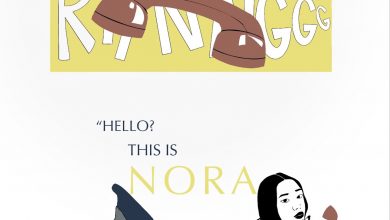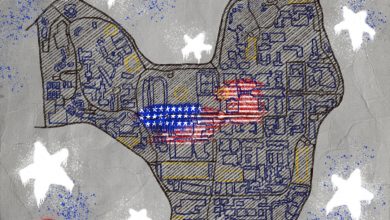Rebecca Sugar: Creating Her Own Kind of “Universe”
Rebecca Sugar, famously known as a storyboard writer for Cartoon Network’s Adventure Time, officially became the first woman to solely create a cartoon in the 21 years Cartoon Network has aired.
At only 26, Sugar made history by debuting her new show “Steven Universe” in November 2013. “Steven Universe” revolves around a happy-go-lucky boy named Steven who’s in the care of his mother’s superpowered allies. As Steven grows and discovers his gem-related powers, the audience learns about his past and his relationship with three women: Amethyst, Garnet, and Pearl. The show’s unique maturity and realistic portrayals of characters are what make Sugar’s show enticing and attractive.
Since her characters mirror real people and real personalities, the world of “Steven Universe” feels authentic and down-to-earth despite the magical powers and monsters.
In an industry that’s full of men, Sugar’s work exemplifies a move toward women’s empowerment. As a female artist and animator, her work demonstrates how the animation industry is moving toward a more female-friendly environment.
Since the early development of cartoons, women working in animation was scarce. Cartoons like Looney Tunes and even early Disney movies like Sleeping Beauty all consisted of a male-dominated crew. In the present, women have steadily moved towards equality in animation studios. Disney’s “Frozen” director Jennifer Lee exemplifies these steady moves towards gender equality.
Despite all of the commotion about revolutionizing cartoons, Sugar did not animate in order to be a role model. She just wanted to animate. Her ambition to do what she wants makes her a role model to others.
Before “Steven Universe”, Sugar was famously known for working with “Adventure Time”’s creator, Pendleton Ward. Although Sugar worked as a storyboard writer for “Adventure Time”, her experience came from a range of different art experiments. As a teenager, Sugar attended comic conventions and published her work. Even though she did not animate until her 20’s, Sugar always knew she wanted to do something with cartoons or art. Through plenty of exhibitions, she caught the eye of Pendleton Ward.
Pendleton Ward’s “Adventure Time” was wildly successful, and the episodes Sugar helped create held a particularly large amount of views. She worked on popular episodes such as “It Came from the Nightosphere,” “Fionna and Cake,” and “Simon and Marcy,” which each accumulated 2.6 to 3.3 billion viewers.
Her success led to nominations for an Annie Award and an Emmy award for her storyboard and art.
Even though the target audience for “Steven Universe” is children, her show exemplifies how a show can appeal to a variety of ages. Steven exploits the relationships between people while also portraying the wonder of youth, appealing to younger children as well as older children. When interviewed by Indiewire, Sugar explained,
“Everything’s from the perspective of Steven. He’s experiencing everything for the first time, and so are you.”
In an interview with The Washington Post, Sugar explained that events in her life inspired “Steven Universe.” Her brother, who constantly kept Sugar company throughout her lonely years in high school, inspired her to name the main character after him. She described, “If I ever felt weird around my friends, Steven would always be there.”
Furthermore, Sugar explained that her own personality inspired the three women in the show. All three women in the show express themselves in a completely oppositional manner, which mirrors Sugar’s experience growing up.
The strong and powerful Garnet portrays the kind of person Sugar aspired to be. Pearl, meticulous and wise, resembles Sugar’s overall personality while Amethyst’s laid-back and mischievous disposition describes her personality when she’s with her younger brother.
Rebecca Sugar, who landed a spot in Forbes “30 under 30” list, exhibits how a passion for animation can be done, no matter what gender.
Although she works in a male-orientated industry, Sugar follows her passion regardless of gender institutions. Revolutionizing the cartoon industry may not be that important to her, but we should acknowledge her accomplishments and work to one day achieve our own personal goals in life.




